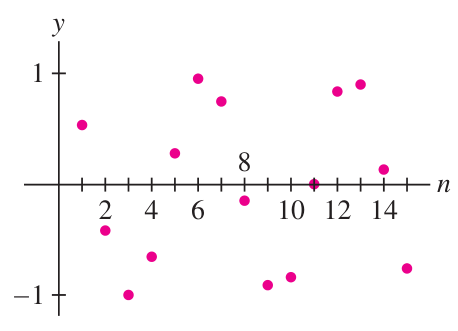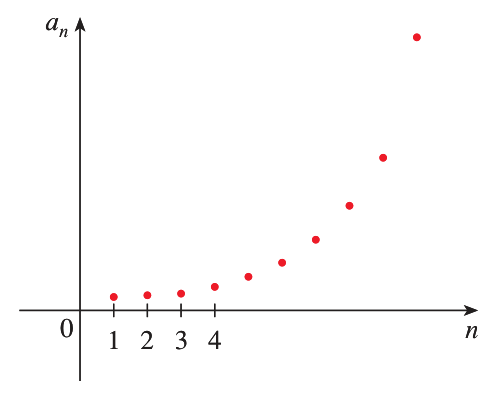Theory 1
A sequence has a limit if its terms tend toward a specific number, or toward

When this happens we can write “
The sequence is said to converge if it has a finite limit
Some sequences don’t have a limit at all, like

Or

These sequences diverge.
In the second case, there is a limit
A sequence may have a limit of
but is still said to diverge.
Extra - Convergence definition
The precise meaning of convergence is this. We have
as if, given any proposed error , it is possible to find such that for all we have . When
, convergence means that given any , we can find such that for all we have . Similarly for
.
If the general term
If
Theory 2
Monotone sequences
A sequence is called monotone increasing if
for every . A sequence is called monotone decreasing if
for every .
In this context, ‘monotone’ just means it preserves the increasing or decreasing modality for all terms.
Monotonicity Theorem
If a sequence is monotone increasing, and bounded above by
, then it must converge to some limit , and . If a sequence is monotone decreasing, and bounded below by
, then it must converge to some limit , and .
Terminology:
- Bounded above by
means that for every - Bounded below by
means that for every
Notice!
The Monotonicity Theorem says that a limit
exists, but it does not provide the limit value.
Theory 3
Series convergence
We say that a series converges when its partial sum sequence converges:
Let us apply this to the geometric series. Recall our formula for the partial sums:
Rewrite this formula:
Now take the limit as
So we see that
converges exactly when . It converges to .
(If
Furthermore, we have the limit value:
This result confirms the formula we derived for the total
Extra - Aspects of
and from the geometric series Notice that we always have the rule:
This rule can be viewed as coming from partitioning the full series into a finite part
and the remaining infinite part: We can remove a factor
from the infinite part: The parenthetical expression is equal to
, so we have the formula given above.